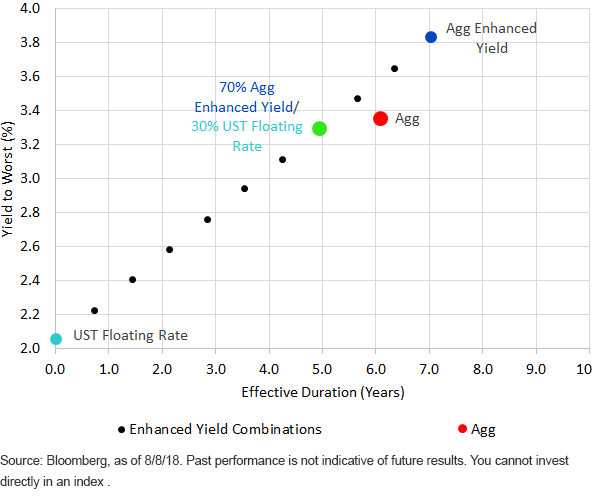By Kevin Flanagan, WisdomTree Senior Fixed Income Strategist
Although U.S. interest rates have risen from their record-setting depths, there is no doubt that, from a historical basis, they still remain rather low. Against this backdrop, I am asked on a regular basis: What’s a prudent strategy that fixed income investors can follow to not only help mitigate the potential for a further move up in rates but also take income-conscious needs into consideration? A time-tested approach that aims to solve for both of these factors is the barbell strategy.
For those readers who are unfamiliar with such an approach, a fixed income barbell is a strategy that essentially replicates the weight-lifting apparatus. In other words, the investor utilizes two parts of the yield curve: on the one side, the focus will tend to be on an intermediate or longer-duration vehicle while the other end of the spectrum will concentrate on a short-duration instrument. These two “weights” on the barbell serve two different purposes. The intermediate/longer-duration aspect can help to solve for income needs, while the short-duration investment serves as the “rate-mitigating” force.
Yield to Worse and Effective Duration Comparison
Enhanced Yield/UST FRN vs. Aggregate
![]()

For definitions of terms in the glossary, please click here.
So, what does the barbell look like in practice? In this blog post, I will focus on two specific indexes: the Bloomberg Barclays U.S. Aggregate Enhanced Yield Index (AEY) and the Bloomberg U.S. Treasury Floating Rate Bond Index (UST FRN). The latter index, UST FRN, will serve as the short-duration weight of the barbell and is based on the 2-Year Treasury floating rate note. AEY is a yield-enhanced index that reweights the sectors of the Bloomberg Barclays U.S. Aggregate Bond Index (Agg) and serves as the longer-duration weight.
